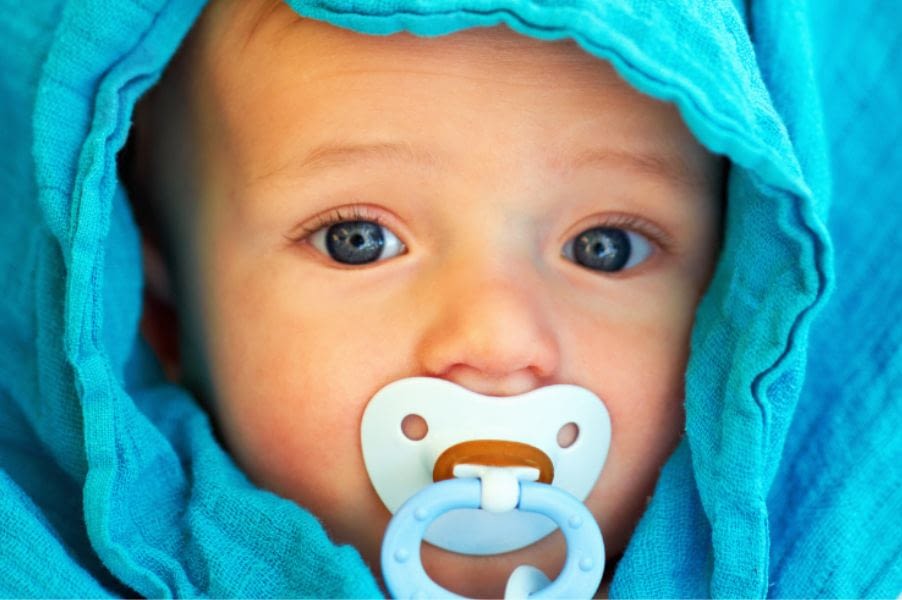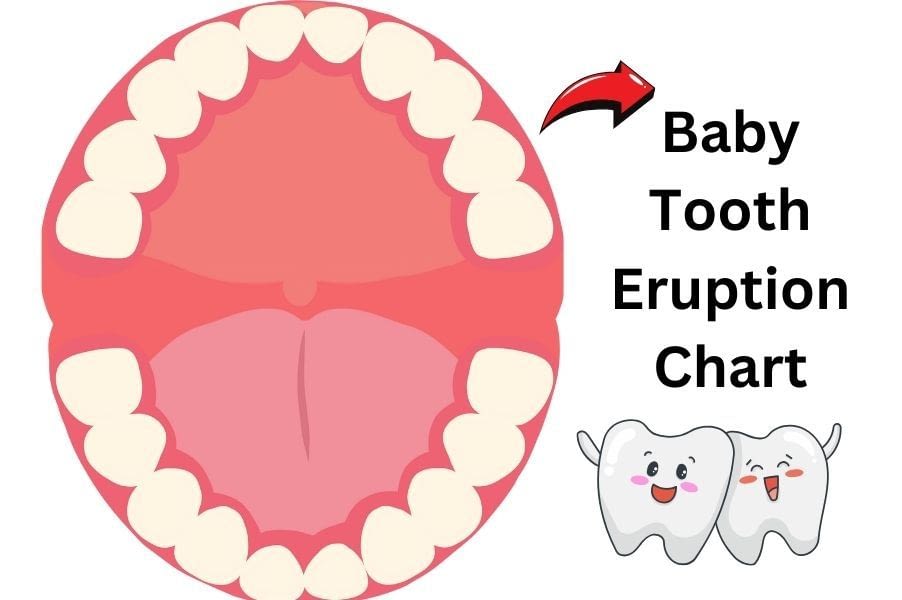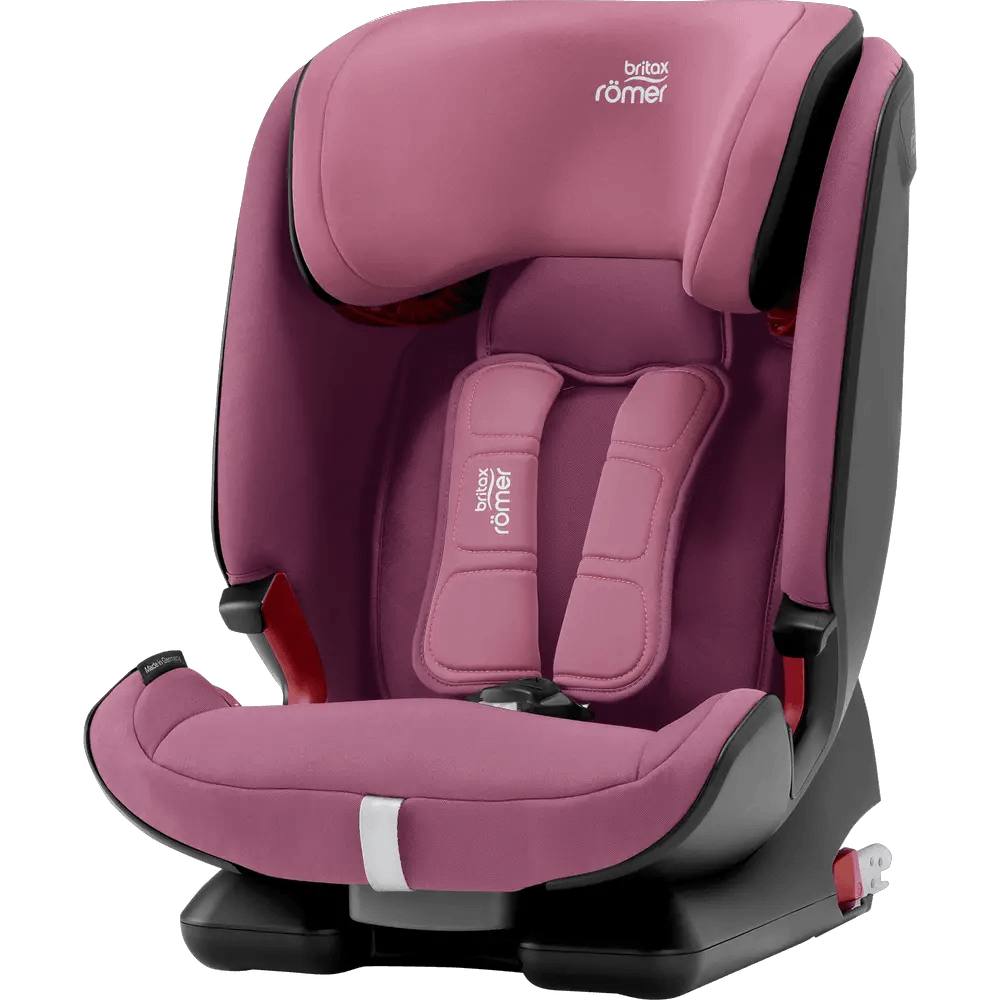As a parent of a tongue-tied baby, you know the struggles that can come with finding the right pacifier. Especially when they reject it after all your hard work, it can be stressful.
That’s why I’ve dedicated this blog post to helping parents like you find the best pacifier for tongue tie babies. I’ll share my top recommendations and helpful tips on choosing one that best fits your little bundle of joy.
When can a baby hold a pacifier in their mouth? Well, babies typically develop the fine motor skills necessary to grasp objects, including pacifiers, between the ages of 4 and 6 months. However, this can vary from one child to another.
Tongue Tie in babies
A tongue tie is the inability of a baby to latch onto the breast properly. This occurs due to restricted tongue movement and a high palate, making it challenging to generate suction. As a result, successful breastfeeding becomes difficult, and maintaining a sustained suck on the pacifier becomes a challenge.
Consequently, it is natural for parents of babies who have had tongue tie release to desire early introduction of the pacifier. This condition can present a variety of symptoms, which differ from one baby to another. Notable symptoms include:
- Difficulty latching onto the breast during breastfeeding.
- Notable clicking sound while breastfeeding.
- Poor weight gain or failure to thrive.
- Recurrently breaking suction while nursing.
- Prolonged feeding time.
- Frustration during feeds.
- The tongue cannot extend beyond the lower gum line.
- A heart-shaped or pointed tongue tip when the tongue is extended.
- Difficulty with tongue movements, such as licking lips.
- Gumming or chewing of the nipple while breastfeeding causes soreness.
Features to look for in the best pacifier for tongue tie
Like best baby bottles, a good pacifier for tongue-tied babies, both before and after the release, should have several key characteristics to ensure it meets your baby’s unique needs.
- Firstly, it should be easy to latch onto. Among different types of pacifiers, a pacifier with a rounded or bulb-shaped nipple is generally easier for a tongue-tied baby to grasp. The nipple should also be soft and flexible, allowing for easy positioning and movement within the mouth.
- Secondly, it should have a narrow base to fit comfortably between the baby’s lips without causing strain on the jaw or interfering with breastfeeding. This is especially important if your baby has a high palate.
- Thirdly, it should have a shield size that fits comfortably in your baby’s mouth. A shield size that is too large can cause your baby to gag or reject the pacifier altogether, while one that is too small may not provide enough surface area for proper suction.
Some other important factors to consider when choosing a pacifier for your tongue-tied baby include durability, ease of cleaning, and availability of different sizes as your baby grows.
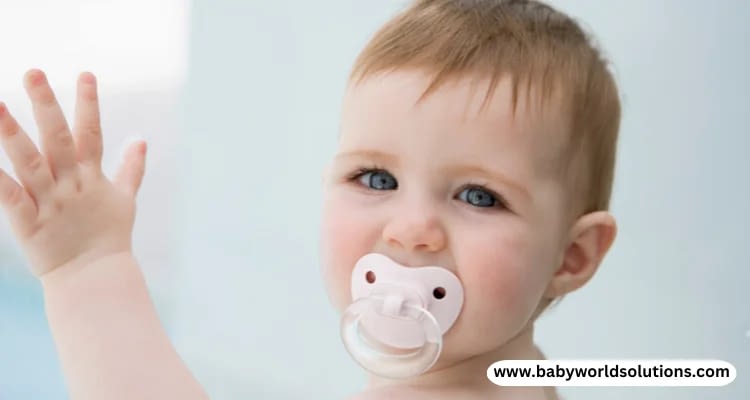
10 Best Pacifiers for tongue tied babies
In this article, I will delve into the top pacifiers for babies with tongue ties, Lip ties, and high palate. My experience has shown that these pacifiers are also ideal for babies after a tongue tie release. Babies often face challenges after release while using a pacifier, as they must learn to utilize their newfound tongue and mouth mobility effectively.
Let’s explore the best orthodontic approved pacifiers for these little ones and help them navigate this important stage.
MAM Comfort Baby Pacifier (Dentist recommended pacifier)

Having used the MAM Comfort Baby Pacifier for my baby, I can confidently vouch for its effectiveness. My baby, who had a tongue tie, took to this pacifier quite naturally, thanks to its lightweight silicone design, which made it easy for him to latch on.
Despite the initial difficulties my baby faced due to his condition, the pacifier’s design seemed to accommodate his needs perfectly, even after his tongue tie snip. The sterilizer case was an added bonus, making it simple to maintain hygiene, a comforting factor for any parent.
The design proved to be durable, and we used the same pacifier for the first three months without any issues. It was particularly heartening to observe that the pacifier did not interfere with breastfeeding and seemed to promote healthy oral development.
Why do I recommend it?
- It is a top-rated product specifically designed with the comfort and health of your baby in mind, making it an ideal choice for babies with tongue ties, both pre and post-release.
- Featuring an extra-small and lightweight design, it is made of 100% silicone, ensuring it is soft, flexible, and comfortable in your baby’s mouth. This not only makes it easier for your baby to grasp and latch onto but also aids in reducing the pressure on your baby’s gums and palate.
- The pacifier’s lightweight design eases the strain on the baby’s jaw and allows it to mimic the natural sucking motion during breastfeeding, promoting healthy oral development.
- A bonus is the pacifier’s sterilizer case, which not only serves as a safe and hygienic storage option but can also be filled with water and microwaved for quick and convenient sterilization. This makes it easy to maintain the pacifier’s cleanliness, ensuring your baby’s health isn’t compromised.
Philips AVENT Soothie Heart Pacifier (Best pacifier for breastfed baby)
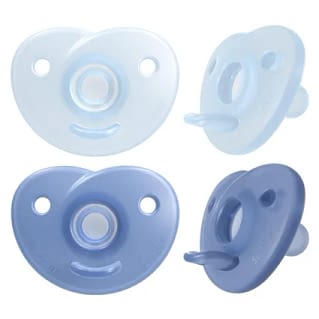
The Philips AVENT Soothie Heart Pacifier is a trusted name amongst parents, especially for tongue-tied babies. It boasts a 100% medical-grade silicone construction, ensuring a soft and comforting experience for babies.
This Soothie type pacifier has a unique heart-shaped shield that is not just aesthetically pleasing, but it also doesn’t touch the baby’s nose, offering enhanced comfort.
My experience with the Philips AVENT Soothie Heart Pacifier has been excellent. It has provided soothing comfort to my child, and I’ve noticed a significant difference in reduced fussiness, especially when my baby pushes pacifier out with tongue.
The single-piece construction ensured no choking hazards, and cleaning it was an absolute breeze. It also adhered to frequent sterilization, a big plus for any parent.
Why do I recommend it?
- One of the key features of this pacifier for tongue tie is its round nipple design. This carefully designed nipple encourages healthy oral development by promoting the tongue’s natural positioning.
- It is suitable for babies aged 3-18 months, making it a versatile choice as your child grows.
- It offers a blend of safety, functionality, and style.
Chicco PhysioForma Pacifier (Best orthodontic pacifier )

The Chicco PhysioForma Pacifier is an excellent choice among orthodontic approved pacifiers for babies with high palate. Made entirely of soft silicone, it offers a comfortable and soothing experience for your baby. This pacifier is one piece, ensuring safety and simplicity while cleaning.
Why do I recommend it?
- It features an orthodontic nipple that supports natural oral development and breathing in cleft palate babies. Its unique design reduces the risk of oral complications by distributing pressure evenly across the palate.
- This special pacifier for cleft palate children is also designed to support your baby’s breathing by helping to position the tongue forward and keep the airway open.
- It also comes with a reusable sterilizing case. This adds convenience, as it allows for easy sterilization in the microwave.
- It is also BPA and Latex-free, ensuring it’s safe for your baby’s use.
To sum up, the Chicco PhysioForma pacifier is not only comfortable for your lip tie baby but also aids in their oral development, adheres to safety standards, and comes with a convenient sterilizing case.
Boon JEWL Biometric Silicone Baby Pacifier (Best pacifier with the shortest nipple)
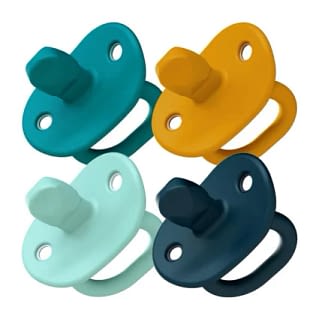
The Boon JEWL Biometric Silicone Baby Pacifier is a standout product with a short nipple well-suited for a baby gagging on pacifier. Crafted from soft silicone, this pacifier ensures a comfortable experience for your infant while also supporting the natural development of their oral structure.
Why do I recommend it?
- The unique gem-shaped nipple design of this Best pacifier for bottle-fed babies not only adds a fun aesthetic element but also provides an orthodontic function, promoting even pressure distribution across the palate and aiding in the correct positioning of the tongue.
- The single-piece construction ensures safety and the strong silicone material promises longevity.
- The pacifier is sized for babies aged 0+ months, making it a versatile choice as your little one grows.
- Additionally, it comes in a pack of two, offering excellent value.
In conclusion, this cleft palate pacifier represents a thoughtful blend of design, comfort, function, and durability. It stands as a worthy consideration for any parent seeking a pacifier for their tongue-tied baby.
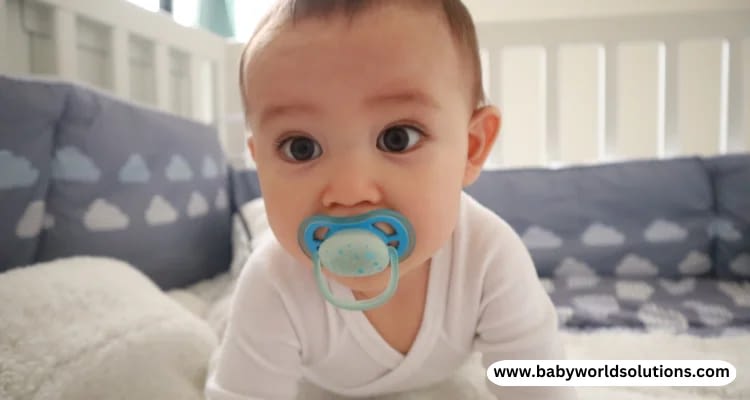
Itzy Ritzy Sweetie Soother Pacifier(Best pacifier for teeth development)
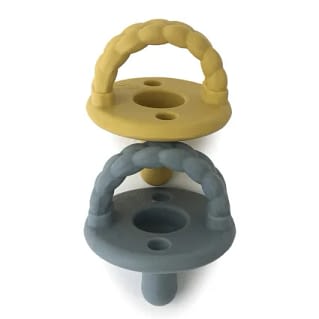
The Itzy Ritzy Sweetie Soother Pacifier is a top-notch product that beautifully combines elegance and functionality. Made from 100% food-grade silicone, this Orthodontic pacifier ensures a soft and comforting experience that tongue-tied babies will find soothing. Its one-piece construction enhances safety and simplifies cleaning, making it an ideal choice for health-conscious parents.
Why do I recommend it?
- It has an innovative butterfly-shaped design, which not only adds a cute aesthetic touch but also serves to keep the baby’s nose clear, facilitating easier breathing.
- Moreover, the pacifier is designed with a round-shaped nipple that promotes dummy use after tongue tie snip, and oral development and ensures proper tongue positioning.
- The Itzy Ritzy pacifier comes in a set of two and includes a protective cap for each pacifier, providing a hygienic storage solution when not in use.
- This is among dentist approved pacifiers, suitable for babies from the newborn stage and up, offering versatility as your child grows.
In conclusion, the Itzy Ritzy Sweetie Soother Pacifier is a well-thought-out product that prioritizes your baby’s comfort, oral development, and safety. With its chic design and robust features, it is an excellent choice for parents seeking the best pacifier for tongue tied babies.
Brown’s HappyPaci 100% Silicone Pacifier (Best pacifier for 3 month old)
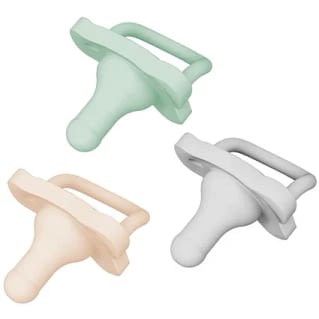
Dr. Brown’s HappyPaci 100% Silicone Pacifier is a premium product designed with the comfort and safety of tongue tie, cleft palate, and high palate babies in mind. It boasts a 100% silicone construction, ensuring a soft, soothing experience for your little one. The one-piece pacifier is not only easy to clean but also meets all safety standards, making it an ideal choice for discerning parents.
Why do I recommend it?
- Its unique shape keeps the baby’s nose clear, promoting easier breathing. The contoured “butterfly” shield curves away from the baby’s face for comfort and allows plenty of room for little noses and cheeks.
- Additionally, the pacifier’s nipple contributes to the healthy oral development of your baby by stimulating the tongue’s natural position.
- It is designed for babies ages 0-6 months, and it comes in a pack of three, offering excellent convenience and value.
In conclusion, with its style, comfort, and functionality, Dr. Brown’s Silicone Pacifier is a reliable choice for parents seeking a high-quality pacifier to soothe their infants.
NUK Comfy Orthodontic Pacifiers (Best pacifier for high palate)
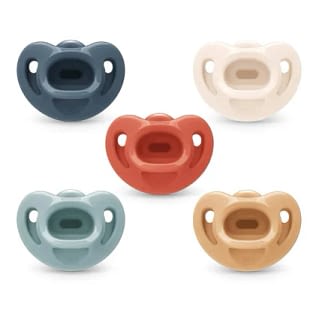
The NUK Comfy Orthodontic Pacifiers are an excellent choice for infants aged 0-6 months. The pacifier is constructed from high-quality materials, ensuring durability and longevity. One standout feature of this product is its orthodontic shape, designed to fit naturally in your baby’s mouth.
Why do I recommend it?
- The pacifier’s shield, contoured to fit your baby’s face, offers an added comfort factor, as it doesn’t obstruct breathing and reduces the likelihood of skin irritation.
- The orthodontic pacifier is easy to clean, and parents will appreciate the added convenience of being dishwasher-safe.
- The Lip tie pacifier also has a loop handle for easy grasping, a feature that my baby enjoyed.
In conclusion, the NUK Comfy Orthodontic Pacifiers provide comfort, functionality, and value.
RAZBABY JollyPop Baby Pacifier Newborn (Best pacifier for bottle-fed babies)
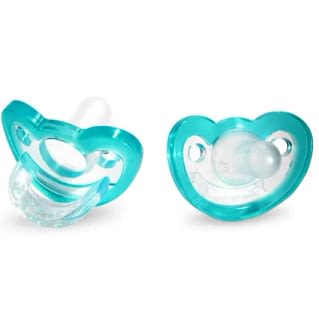
The RAZBABY Pacifier is a highly recommended choice for newborns, particularly tongue-tied ones. Crafted from 100% medical-grade silicone, it is not only durable but also free from harmful substances such as latex, BPA, and phthalates, thereby ensuring your baby’s safety.
Why do I recommend it?
- The pacifier’s standout feature is its soothie shaped nipple, designed to fit naturally in your baby’s mouth, promoting proper tongue positioning and supporting gums development.
- The two-sided design of the nipple allows babies to use the pacifier in either direction, adding to its convenience.
- The one-piece construction of the RAZBABY JollyPop enhances safety by eliminating choking hazards.
- Moreover, this design simplifies cleaning, making this cute pacifier a practical choice for busy parents.
- The best pacifier for tongue tie is specifically designed for newborns aged 0-3 months, providing suitable sizing for this delicate age group.
In conclusion, the RAZBABY JollyPop Baby Pacifier is an excellent product that combines safety, comfort, and functionality. With its careful design and thoughtful features, it is a reliable pacifier choice for parents of tongue-tied newborns.
Munchkin® Sili-Soothe & Teethe™ (Best binky for teeth)

This tongue tie pacifier is a dual-function product that serves as both a pacifier and a teether, making it a versatile addition to your baby essentials. This innovative product is crafted from high-quality silicone, ensuring a soft and soothing experience for your baby.
The Munchkin pacifier’s design encourages healthy oral development and proper tongue positioning, making it an excellent choice for tongue-tied babies.
Why do I recommend it?
- It features a textured surface during the teething stage. As a mother, I found this feature extremely beneficial as it helped soothe my baby’s sore gums.
- It is easy to clean and durable, ensuring it can withstand the wear and tear of regular use.
In conclusion, this soother is a superior product that combines innovation, safety, and convenience. From my personal experience, it has been a valuable tool in providing comfort to my baby during the critical teething phase.
Mama Bear Glow-in-the-Dark Baby Pacifier (Best Orthodontic Dummy)
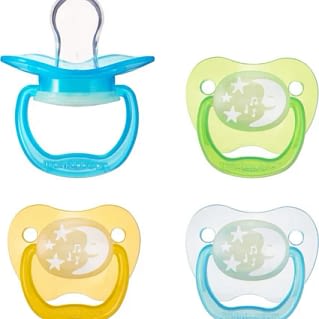
The Mama Bear Glow-in-the-Dark Baby Pacifier is a unique product that stands out in the market of baby essentials. Designed for babies ages 6-12 months, this pacifier is made with BPA-free materials, ensuring safety for your baby.
Why do I recommend it?
- The glow-in-the-dark design is an ingenious addition that facilitates locating the pacifier in the dark, thus minimizing disturbances during your baby’s sleep.
- It has a symmetrically shaped nipple, promoting proper tongue positioning. This feature makes it a suitable choice for babies with tongue-tie.
- Its shield is designed to fit comfortably around your baby’s mouth, reducing the risk of skin irritation.
- Cleaning this dummy is a breeze, thanks to its dishwasher-safe design.
In conclusion, the Mama Bear Glow-in-the-Dark Baby Pacifier is an excellent blend of innovation, safety, and value. It offers both functionality and comfort, making it a reliable choice for parents seeking a quality pacifier for their little ones.
Conclusion: Best pacifier for tongue tie baby
Ultimately, parents should try out different pacifier styles to find the one that works best for their babies. If you have a baby with a tongue tie, cleft, and high palate and are struggling to find a good-fitting binky, it is important to have patience in your search.
Some may be better than others, so it’s worth it to take the time to compare the options available and read the reviews of what each soother offers to your child. Remember that reducing discomfort and ensuring proper jaw development is critical for new babies – don’t settle for anything less than success!
Ultimately, finding the correct pacifier for your little one can help them get off to the right start in life and ensure they are comfortable during their formative first months. Now, give your beloved bundle of joy the best start possible with the perfect pacifier!
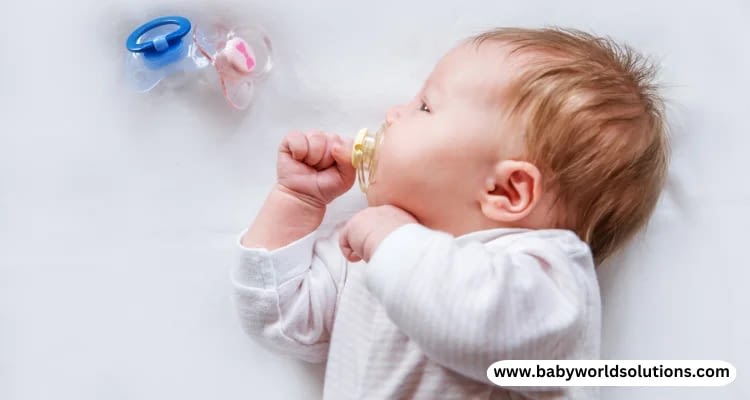
Buying Guide: What are the characteristics of a good pacifier for tongue tie babies before and after release?
A good pacifier for tongue-tied babies, both before and after release, should have the following characteristics:
- Shaped for comfort: The pacifier should be designed in a way that it fits comfortably in the baby’s mouth. It should not interfere with the natural position of the tongue or put undue pressure on the baby’s gums or palate.
- Easy to latch onto: A good pacifier for tongue-tied babies is one that they can latch onto quickly. This means it should be designed so that it’s easy for the baby to create suction and keep the pacifier in their mouth without straining their tongue or jaw.
- Made from soft, safe materials: All pacifiers should be made from materials that are both soft to touch and safe for babies. This typically means BPA-free, latex-free, and phthalate-free materials.
- Promotes healthy oral development: The pacifier should be designed in a way that supports healthy oral development. This includes allowing for natural movement of the tongue and jaw and not interfering with the growth of teeth or formation of the palate.
- Ease of cleaning: Pacifiers can harbor bacteria, so they must be easy to clean. Look for pacifiers that are dishwasher safe or can be boiled for sterilization.
- Durable: Given that pacifiers are used regularly, it’s important that they’re durable and can withstand regular use and cleaning.
- Breathable Design: The shield or base of the pacifier should have ventilation holes. This ensures that air can circulate, preventing saliva from accumulating and reducing the risk of skin irritation.
- Size appropriate: The pacifier should be the right size for your baby’s age. Most manufacturers provide age guidelines for their products.
- Easy to hold: Once the baby begins to develop the ability to grasp, a handle or ring on the pacifier can aid in helping them learn to self-soothe by putting the pacifier back in their mouth themselves.
Why does my baby gag on pacifier?
When introducing a pacifier to your baby for the first time, it’s not uncommon for the baby to gag. The gag reflex in infants is a protective mechanism that helps prevent choking. When a pacifier or any object is introduced into the baby’s mouth, it may touch the back of the tongue or throat, triggering this reflex.
It is also possible that the size or shape of the pacifier is not suitable for your infant’s mouth, such as binkies with long nipples can cause discomfort or a gagging sensation. Over time, as your baby gets used to the sensation of the pacifier, the gagging should lessen. If it persists, it may be worth trying a different style or size of pacifier.
How to keep a pacifier in a babies mouth?
Keeping a pacifier in a baby’s mouth can be a challenge, especially for newborns who are still learning how to suckle and hold onto the pacifier. Here are some steps you can follow:
- Ensure Correct Size: Always choose a pacifier appropriate for your baby’s age. The size and design should match your baby’s developmental stage to ensure it fits comfortably in their mouth.
- Introduce Gradually: Gradually introduce the pacifier during calm or fussy times. Don’t force it, but gently place it in your baby’s mouth.
- Hold it in Place: In the beginning, you might need to hold the pacifier in your baby’s mouth until they start suckling. Please don’t force it, but gently support it so it doesn’t fall out.
- Try Different Pacifiers: Every baby is unique and might prefer different pacifiers. If your baby has difficulty keeping one type in their mouth, try different shapes or materials.
- Encourage Sucking: Encourage your baby to suck on the pacifier by gently pulling on it. This can trigger your baby’s natural sucking reflex and help them latch onto it better.
1 Visit today

